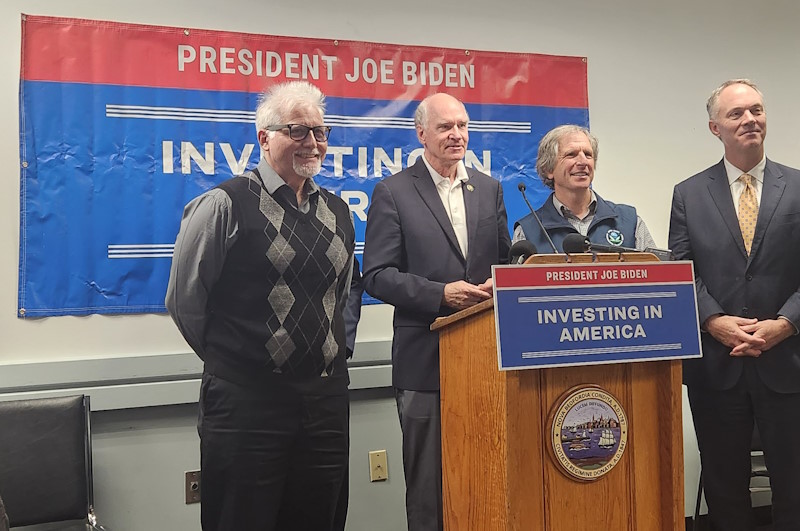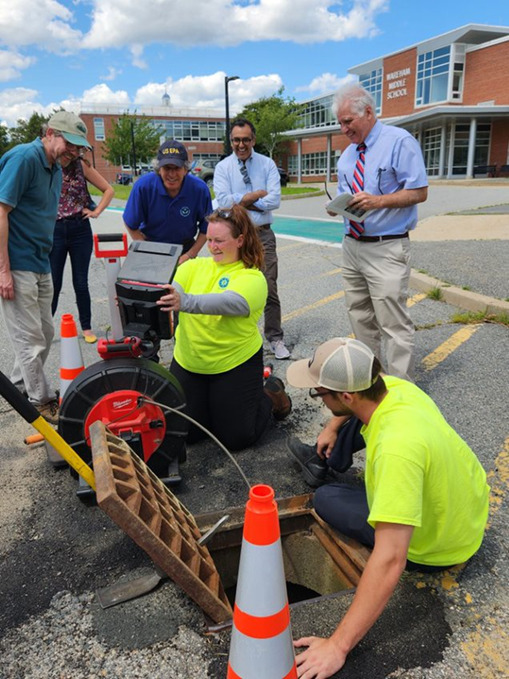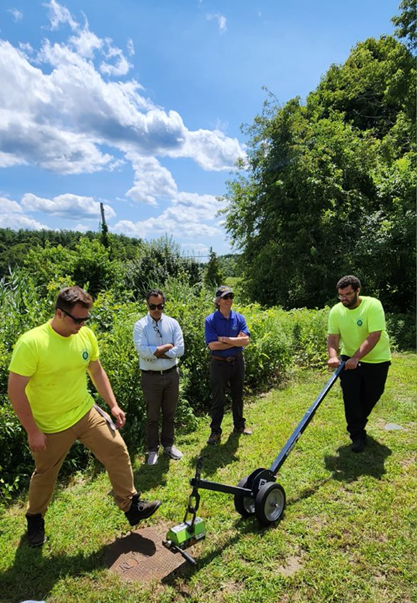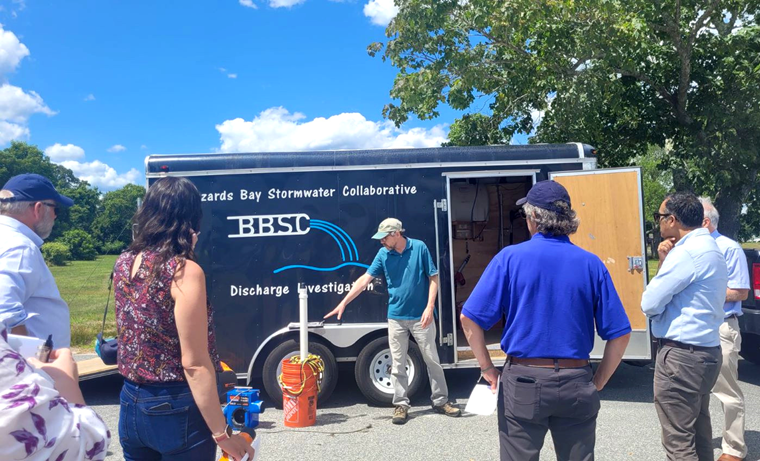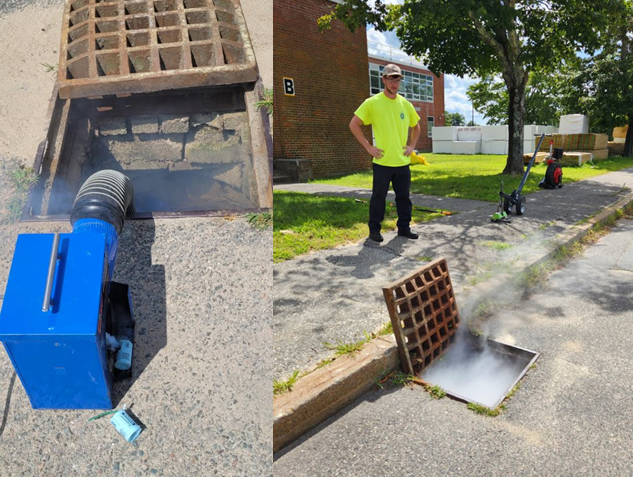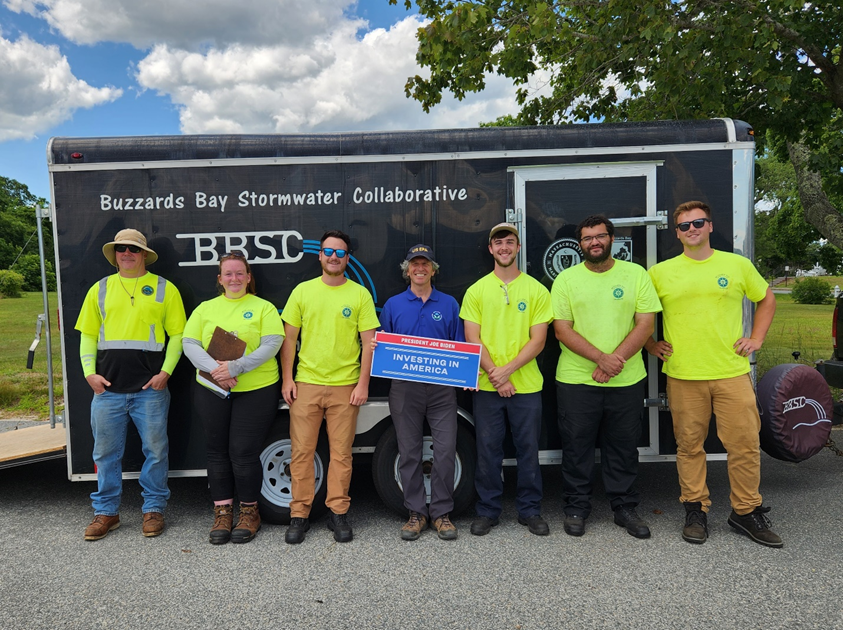The Buzzards Bay National Estuary Program awarded $558,531 in federally-funded grants for projects that will improve water quality and habitat in the Buzzards Bay watershed. These five grants will fund efforts to treat stormwater discharges, create salt marsh habitat, study the effectiveness of nitrogen removal from a wastewater treatment plant, assess the feasibility of a neighborhood-scale wastewater system, and comply with stormwater management requirements. Grants are awarded by the Buzzards Bay National Estuary Program (NEP) through the Massachusetts Office of Coastal Zone Management (CZM), with funding from the U.S. Environmental Protection Agency (EPA) under the Infrastructure Investment and Jobs Act of 2021. The grants also leverage $336,000 in local, state, and federal funds and in-kind services and help meet Massachusetts’ climate resilience and environmental equity goals.
The following municipalities were awarded grants:
The Town of Fairhaven will receive $125,000 to improve water quality in Outer New Bedford-Fairhaven Harbor by reducing pollution from stormwater runoff. The grant will fund stormwater retrofits, including green infrastructure designs to treat road runoff from Jerusalem Road and leverage other state funding. The runoff currently discharges to a shellfish growing area, causing the area to be closed periodically to shellfishing after rainfall.
The City of New Bedford and its partner, Groundwork Southcoast, will receive $93,531 to hire an engineering firm to conduct a feasibility study and develop design plans for creating a salt marsh habitat in a manmade pond in Riverside Park. The pond is currently overgrown with invasive species and is often used as a dumping ground. The project will return the area to a natural state and create a tidal exchange with the Acushnet River. Groundwork Southcoast and its Green Team, which employs area youth, will work with the city and residents to build environmental stewardship and help ensure that designs for the popular waterfront park meet community needs and environmental sustainability goals.
The Town of Wareham and its partner, the Marine Biological Laboratory, will receive $275,000 to scale up prior pilot studies that showed nitrogen levels can be lowered and effluent quality can be significantly improved at the Wareham Water Pollution Facility by passing effluent through biofilters composed of wood chip media. The proposed Phase 2 field trials will explore how earlier pilot experiments can be scaled to 40-foot-long reactors and will calculate flow rates and infrastructure needed to handle the municipal facility’s daily flows. The Wareham Water Pollution Facility currently has stringent nitrogen limits imposed on its discharge, and the new bioreactor technology, which is more cost-effective than other approaches, would help the town further reduce its nitrogen loading to coastal waters. If successful, the new technology will allow for the increased capacity of the wastewater facility and much-needed expansion of sewering in the town.
The Town of Wareham and its partner, the Buzzards Bay Coalition, will receive $40,000 to assess the feasibility of constructing a neighborhood-scale wastewater system with the purpose of reducing nitrogen pollution from onsite septic systems near Little Harbor Beach on Great Neck. The study will identify potential nearby town-owned property outside the flood zone where the facility might be sited.
The Town of Westport will receive $25,000 to hire a consultant to assist the town with monitoring and investigating municipal separate storm sewer system (MS4) discharges to comply with the town’s federal stormwater permit. The proposed work will safeguard the town’s waterbodies and groundwater by assisting with the control of polluted stormwater runoff, which is a major cause of water quality impairments in the town.
Read more about the grants in this CZM Press release.
